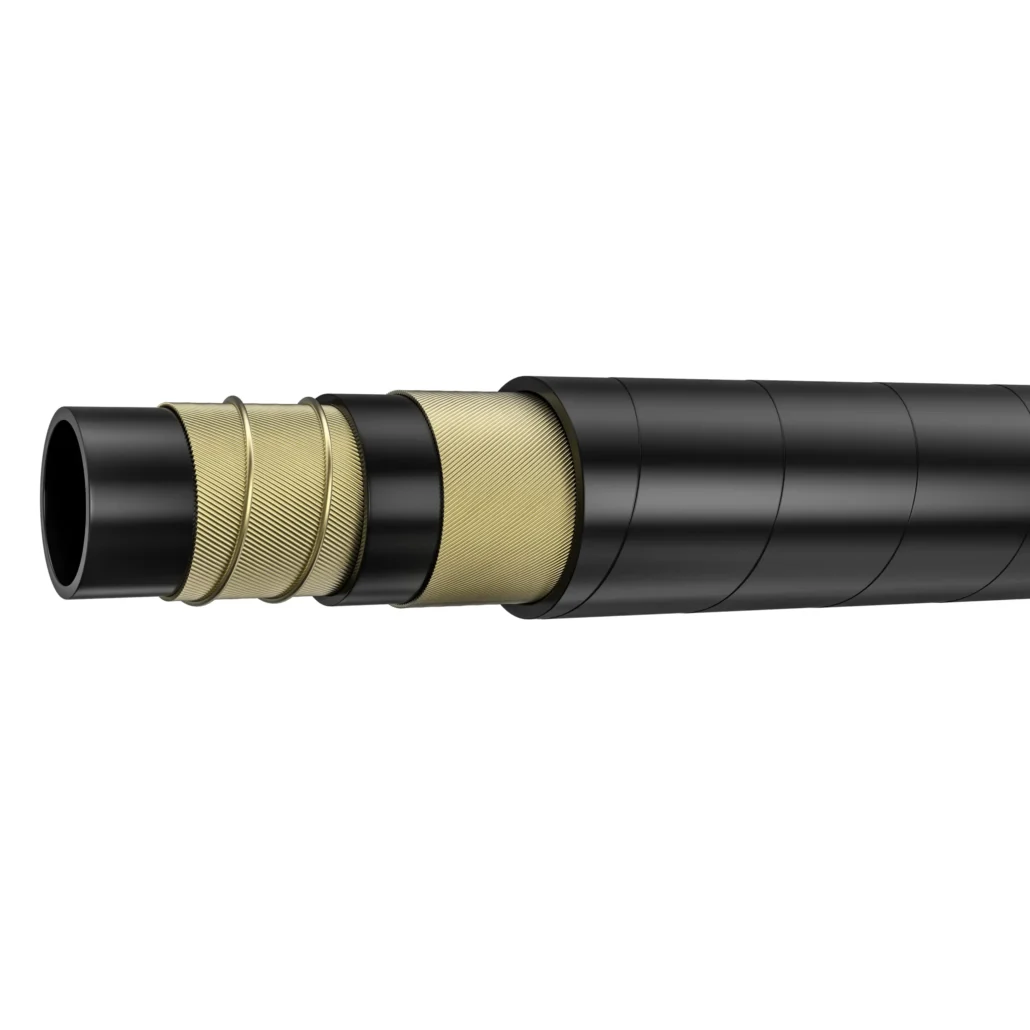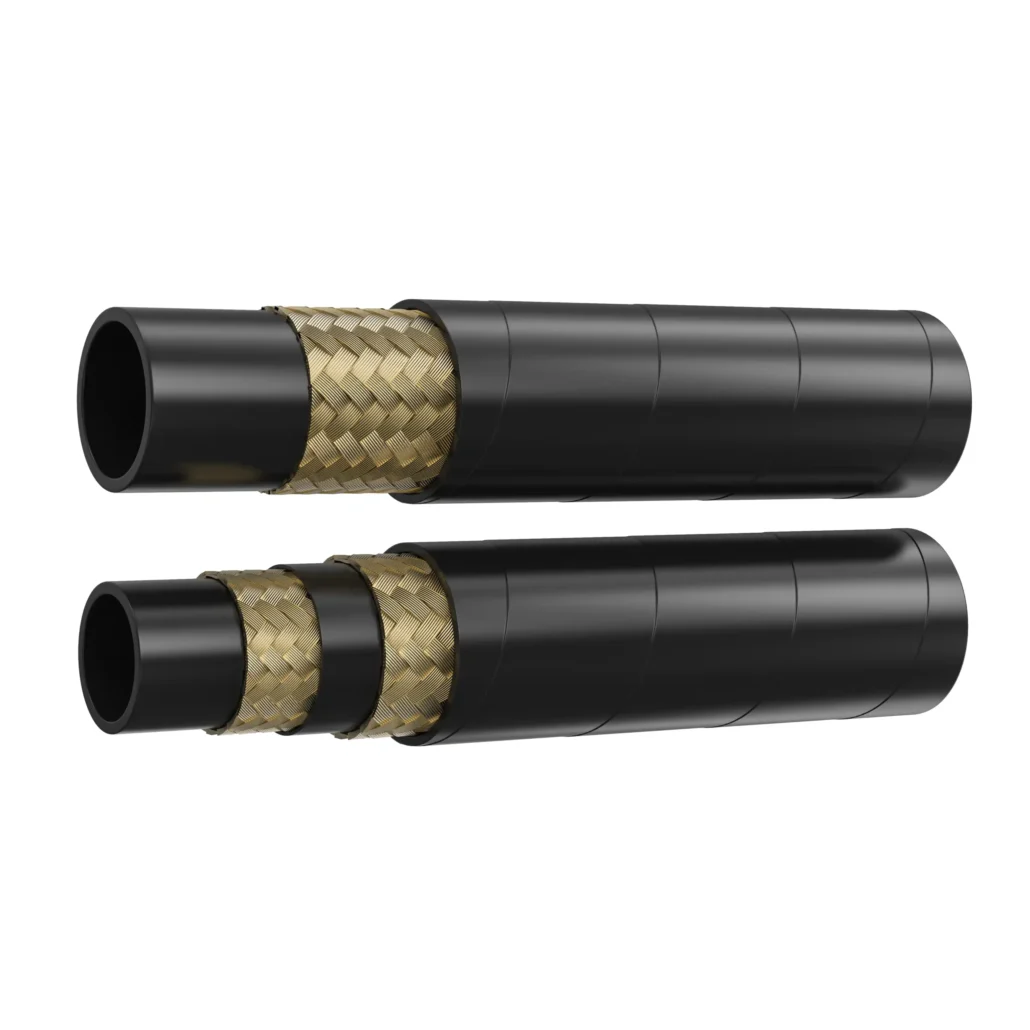We are all more or less familiar with hydraulic systems. We often see these systems in vehicles, machines, and construction gear. Hydraulic hoses are an important part of these systems. You can realize the significance of picking the right hose for these systems. You know, hydraulic hoses come in different styles. The discussion on the spiral vs. braided hose is the most important in this case.
Today, we will discuss the basics of these two hydraulic hoses and their fundamental differences. You will then be able to select the right option for your application. However, choosing the wrong option may have severe consequences, which we will also discuss later. Let’s get started.
What is A Spiral Hose?
As the name implies, this hydraulic hose is also known as a spiral wire hydraulic hose. It is excellent for working in harsh circumstances and handling high pressure and harsh working circumstances.
It comprises many layers of reinforcements arranged in a circular shape. Most of the time, this spiral comes with a high-tensile steel wire. The structure of a spiral hose consists of several vital components.

Inner tube
This is the innermost layer of the hose. Synthetic rubber or thermoplastic are essential materials for the inner tube. It serves as the conduit for hydraulic fluid.
Reinforcement Layers
Spiral hoses have multiple layers of reinforcement. They consist of high-strength steel wires arranged in a helical or spiral pattern. These reinforcement layers allow the hose to withstand high pressure and resist deformation under load.
Cover
It is the outermost layer of the hose. It typically keeps the inner layers safe from wear and tear, corrosion, and damage from the surroundings. This cover is typically made of synthetic rubber or thermoplastic material, reinforced with textile or wire braids. It usually adds durability.
Fittings
A connector or fitting is at each end of a spiral tube. It makes it easier to connect to hydraulic parts.
Advantages of Spiral Hydraulic Hose
High-pressure Handling Capability
One of the best things about spiral lines is this. It is built so that spiral hoses can handle very high pressures. The spiral design makes the structure strong. Because of this mix, these hoses work consistently, even in harsh conditions. Because of this, spiral hoses are essential in machinery, construction, and mining equipment.
Suitable for Impulse Applications
When there are rapid pressure spikes or impulses, spiral hoses work great. This benefit comes from their well-built and designed construction, which ensures they can handle such quick changes in pressure without losing effectiveness.
Easy Handling & Installation
Even though they are durable, spiral hydraulic hoses are surprisingly lightweight. Because of this, they are easy to handle and set up. It makes upkeep & repairs easier and takes less time. They are also flexible enough to work with different routing setups. Overall, it makes the startup process easier.
Cost-effective
Spiral hydraulic hoses are less expensive than braided hydraulic hoses. Because they are cost-effective, spiral hydraulic hoses are suitable for many industries. It cuts down on operating expenses without lowering the quality or durability of the product.
Disadvantages of Spiral Hydraulic Hose
One problem with spiral hydraulic tubes is that they could be more flexible. This could make it harder to use them in some settings or setups. In addition, they may be likely to break easily, especially in very bad circumstances. If installed or kept incorrectly, they could cause downtime and safety risks.
What is a Braided Hose?
A braided hose is a hydraulic hose with a reinforced top layer. This Layer usually comes with strands of wire or fabric twisted together. This reinforcement gives the hose more strength and longevity. It is prevalent in several different high-pressure hydraulic systems.

The structure of a braid hose typically consists of three main layers.
The innermost Layer
This Layer is known as the inner tube. It is in charge of transporting the hydraulic fluid. Most of the time, it’s made of thermoplastic or synthetic rubber. These materials are great because they can handle the transmission of the hydraulic fluid. Indeed, the right materials can stand up to wear and chemical breakdown.
The Middle Layer
This Layer of the hose is the reinforcement layer. This Layer gives the hose its strength and ability to handle pressure. Multiple strands of wire or fabric make up this support layer in braided hoses. The pattern of braiding may be different based on what the hose needs. As a result, it spreads the pressure on the hose equally and keeps it from expanding when it is under a lot of stress.
The Outer Layer
The outer layer is also known as the cover. The cover keeps the hose safe from UV rays and bad weather. Most of the time, thermoplastic or synthetic rubber is the standard material. It may have reinforced layers with additional layers for durability.
Advantages of Braided Hydraulic Hose
Robust Construction
Braided hydraulic hoses come with multiple layers of solid materials. It provides durability & resistance to wear and tear. This design ensures that your hose works perfectly, even in harsh environments.
Suitable for Low-frequency Applications
Braided hoses are suitable for low-frequency applications. Braid hoses are famous for uses that need to be flexible and easy to set up. The way they are built lets fluids flow smoothly through them. Because of this, you can use them without worrying about how well they work.
Ideal for High-Pressure Applications
Braided hoses do well in high-pressure applications due to their reinforced structure. The braided layers make it more robust and more stable. It makes the hose strong enough to handle much pressure without breaking. Because of this, they are better for hydraulic devices that work under very high pressure.
High Flexibility
Braided hydraulic hoses are very flexible, even though they are made to be strong. This adaptability makes planning and installation easy. Even in tight spaces or complex hydraulic systems, these hoses work great. The ability to move and bend without getting kinked or stopping fluid flow. It makes braided cables more valuable and flexible for various projects.
Disadvantages of Braided Hydraulic Hose
For sudden uses, there might be better choices than braided hydraulic hoses. Because of how they are made, these hoses can’t handle sudden changes in pressure. It’s possible that the braided layers won’t offer enough support to handle quick changes in pressure. It could cause the hose to break.
Braided hydraulic hoses tend to be bigger than spiral hoses. It can be hard to work with in small areas or situations where being compact is essential. Because they are bigger, they need more room for hydraulic systems to be installed and routed.
Spiral vs Braided Hose: Which is Better?
Both spiral hose and braid hose are popular hydraulic systems. Each offers unique benefits and disadvantages, as you have seen in the previous few sections. Evaluating the application requirements is very important when choosing the right option for your project. The following table tells you which would be best for your project.
Table: Spiral vs Braided Hose
| Aspect | Spiral Hose | Braided Hose |
| Construction | Multiple layers wound in a spiral pattern | Layers braided around a central core |
| Flexibility | Moderate | High |
| Pressure Handling | High | Moderate to High |
| Durability | Excellent | Good |
| Abrasion resistance | Excellent | Moderate |
| Cost | Cheaper | More Expensive |
| Suitable Application | High-pressure, rugged environments | Low-frequency, tight spaces, moderate pressure |
| Common use | Heavy Machinery, construction equipment | Automotive, aerospace, industrial machinery |
What Happens if you choose the wrong Hydraulic Hose?
Picking the wrong hydraulic hose can cause several problems. If you don’t choose the proper hose, it could break under the system’s pressure, leading to leaks, fluid loss, and even fatal equipment failure.
If you use a hose that isn’t flexible enough, it can wear out quickly, leak, and damage the system. Inappropriate hose selection can also result in inefficiencies, higher repair costs, downtime, and safety risks.
Pressure rating, flexibility, material compatibility, and environmental factors are essential to think about. This will ensure that the hose works well and the system is reliable.
Returning Questions
What is the life expectancy of a braid hose?
If you correctly place and care for the hose, it should last at least 10 to 20 years. However, it depends on how it’s used, how well it’s maintained, and how good the products are. In everyday situations, a braided hose that is well cared for can last several years. However, it might not last as long if used often or in harsh settings.
What is the best material for a hose?
Which material makes the best hose relies on what it will be used for and how it will be used. The most common materials are thermoplastics, synthetic rubber, and stainless steel. Synthetic rubber can be used for many things. Plastic that is flexible and doesn’t react with chemicals is called thermoplastic. On the other hand, stainless steel works well in places with high pressure and temperatures.
What is the most durable type of hose? (Spiral vs Braided Hose)
Spiral hoses are considered the most durable hydraulic hoses. They can be used for all kinds of hydraulic tasks. On the other hand, a braid hose might not work well in sudden situations. Spiral hoses are the most lasting since they are used for different things.
